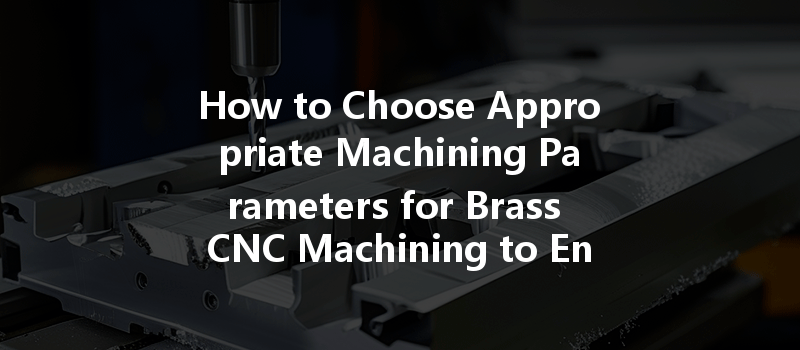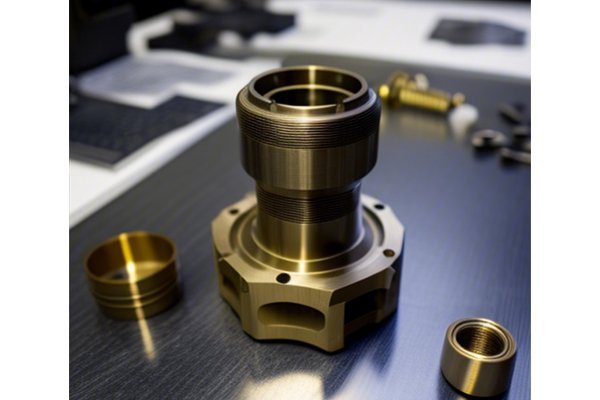Did you know that brass is one of the most widely used metals in CNC machining due to its unique properties? With an excellent balance of strength, corrosion resistance, and machinability, brass stands out as a top choice for a variety of industrial applications. However, getting the most out of brass machining requires a precise understanding of several parameters. In this blog, we’ll delve into how to choose appropriate machining parameters for brass CNC machining—giving you the knowledge you need to enhance quality and efficiency in your production processes.
Understanding Brass: The Material Properties
Before diving into machining parameters, it’s essential first to understand what brass is and why its properties matter in CNC machining. Brass is an alloy primarily composed of copper and zinc, often with trace amounts of other metals. Its attributes include:
Understanding these characteristics prepares you to optimize the CNC machining process for brass components.
Key Machining Parameters for Brass CNC Machining
Now that we have a solid foundation on brass, it’s time to explore the critical parameters that influence the CNC machining process:
Spindle speed, measured in revolutions per minute (RPM), directly affects the surface finish and machining time. For brass, a common spindle speed is between 1,500 to 3,000 RPM, depending on the brass alloy and tooling used.
How to Choose:
The feed rate, or inches per minute (IPM), is how fast the cutting tool moves through the material. For brass, a typical feed rate ranges from 0.002 to 0.012 inches per revolution depending on the operation’s complexity.
Considerations:
The depth of cut defines how deep the tool penetrates the brass during each pass. Typical depths can range from 0.025 to 0.125 inches.
Selection Criteria:
Tool geometry includes the shape, angles, and coating of cutting tools. Changing these factors impacts heat dissipation, cutting efficiency, and overall tool longevity.
Important Features:
CNC machining generates significant heat, especially when cutting metals like brass. The application of cutting fluids or coolant is vital in managing temperature and improving surface finishes.
Cooling Strategies:
Choosing the right tools is crucial. Consider the following:

Proper fixturing stabilizes the workpiece during machining. This helps maintain precision throughout the operation.
Options:
Optimizing the Machining Parameters: A Step-by-Step Guide
Given the range of parameters discussed, employing Machining Parameter Optimization (MPO) can significantly enhance your brass CNC machining operations. Here’s how to do it:
Step 1: Define Objectives
Establish what you are trying to achieve—improved surface finish, lower cycle time, reduced costs, etc.
Step 2: Conduct Tool Tests
Use different combinations of spindle speeds, feed rates, and depths of cut to evaluate performance. Conduct the tests under controlled conditions for reliability.
Step 3: Analyze Data
Collect data on tool wear, surface finish, and machining time. Use statistical tools to identify the best-performing parameters.
Step 4: Implement Changes
Take your findings and adjust the machining processes accordingly. This may include retraining personnel or updating machinery settings.
Step 5: Evaluate Results
Continue to monitor the production process after adjustments. Ensure that results meet quality and efficiency goals.
Step 6: Iterate
Machining technology continually evolves, so remain open to experimenting with new techniques and equipment. Iteration is key to ongoing process enhancement.
Common Challenges and Solutions in Brass CNC Machining
Despite the advantages of brass, machining it comes with its own set of challenges. Below are some common issues and strategies to overcome them.
Challenge: High temperatures and abrasive properties of brass lead to significant tool wear.
Solution: Select tools made of durable materials and keep spindle speeds optimal.
Challenge: Brass can create long, stringy chips, making it difficult to maintain clear cutting areas.
Solution: Implement proper cooling and choose geometry that encourages effective chip breaking.
Challenge: Poor selections of parameters can result in subpar finishes.
Solution: Utilize optimal feed rates and depths of cut, and even adjust the tool path strategy to achieve desired results.
Challenge: Achieving tight tolerances may be difficult with excessive heat generation.
Solution: Control heat through effective cooling and lubrication, and use steady, consistent feed rates.
Choosing the right machining parameters for brass CNC machining isn’t just a matter of guesswork or following some standard metrics; it’s a nuanced decision-making process that integrates various technical considerations.
In this blog, we’ve explored the essential parameters needed for optimizing brass machining—spindle speed, feed rate, depth of cut, tool geometry, cooling and lubrication, and fixture techniques. Additionally, we discussed how to refine these through a structured approach to optimization while addressing common challenges.
Understanding and implementing these techniques can lead to substantial improvements in quality, efficiency, and productivity, ensuring that your brass components meet the stringent demands of today’s industrial applications.
With the rapid advancements in machining technology, keeping abreast of best practices in CNC machining is crucial. Not only does thoughtful parameter selection save time and materials, but it also positions organizations favorably in an increasingly competitive marketplace. Remember, an informed approach to choosing machining parameters is the key to maximizing efficiency and product quality in brass CNC machining.
As you move forward in your CNC machining endeavors, keep this information in mind—your knowledge directly influences your success. Always approach each project with a mindset geared toward optimization and continuous improvement. The journey toward machining excellence starts with informed decisions, so invest in your understanding of machining parameters today!






